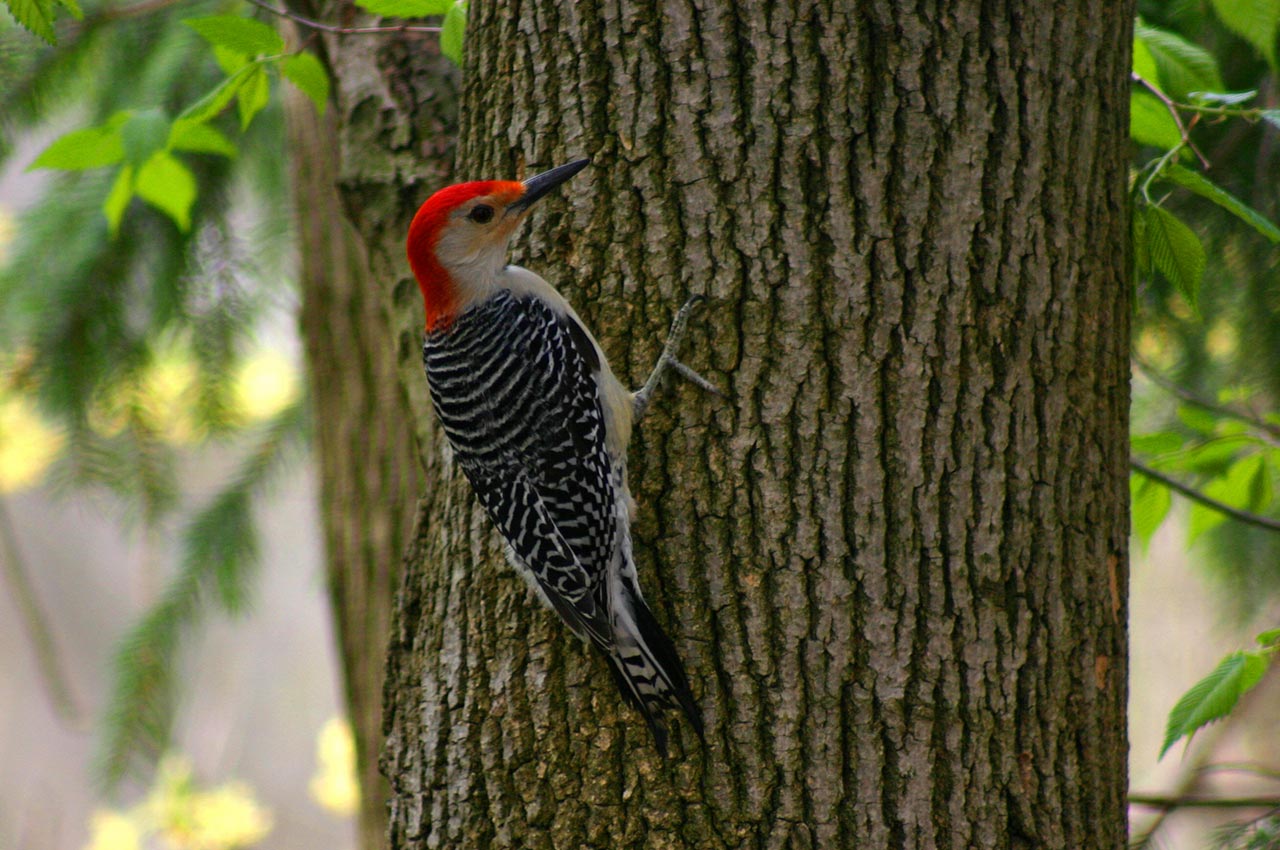Revealing the Keys of Woodpeckers: Actions, Habitat, and A Lot More
Woodpeckers, with their unique habits and specialized adjustments, have long attracted researchers and nature lovers alike. By discovering the enigmas surrounding woodpeckers' habits and habitat options, a much deeper understanding of these bird wonders emerges, offering a peek into their remarkable world.
Woodpecker Actions Insights
In checking out woodpecker behavior, an interesting display screen of specialized skills and adaptations arises, clarifying their impressive eco-friendly niche - Woodpeckers in Florida. Woodpeckers, understood for their unique drumming on trees, have a selection of behavior attributes that add to their survival and success in their setting. One key habits is their drumming, which serves several objectives such as communication, establishing territory, bring in companions, and situating food resources. This rhythmic pecking likewise showcases their amazing strength and endurance, as they can hammer away constantly at broadband without triggering damage to themselves.
Additionally, woodpeckers display a special feeding habits characterized by their capacity to essence bugs from tree bark using their specialized beaks. Their lengthy, barbed tongues help in capturing prey, while their strong neck muscle mass offer stability and precision during pecking movements. This feeding strategy allows woodpeckers to access surprise insect larvae and extract them with exceptional efficiency.
Environment Preferences and Choice
What elements affect the habitat choices and choice of woodpeckers? Woodpeckers are extremely versatile birds known to inhabit various environments worldwide. Nonetheless, they do display choices for sure habitat features. One vital factor influencing woodpecker habitat selection is the availability of ideal nesting websites. Woodpeckers commonly like woodlands with a mix of mature trees that offer enough possibilities for tooth cavity excavation. These dental caries work as vital nesting and roosting websites for woodpeckers and are vital for their breeding success.
Furthermore, woodpeckers reveal a choice for environments with an abundant supply of food resources. They are primarily insectivorous, feeding upon beetles, ants, larvae, and other pests found in decaying wood or tree bark. Therefore, woodpeckers have a tendency to favor woody locations with a diverse insect population to satisfy their dietary requirements.
Furthermore, the existence of dead or rotting trees is another key consider woodpecker habitat choice. These trees not just give food resources yet also use suitable substratum for cavity excavation. Dead trees are vital for the upkeep of healthy and balanced woodpecker populations, as they play a vital duty in the woodpeckers' life cycle and community characteristics.
Feeding Habits and Diet Structure
Woodpeckers demonstrate a specialized feeding behavior focused on foraging for pests within numerous environments. In addition to insects, woodpeckers also consume tree sap, fruits, nuts, and seeds, adding variety to their diet regimen depending on the season and accessibility of food sources.
The foraging methods of woodpeckers are well-adapted to their arboreal way of life. Woodpeckers play a vital role in preserving the health of forests by controlling insect populations and helping in the decomposition this article of timber.
Drumming Appears and Communication
Making use of quick drumming audios on various surface areas, woodpeckers employ an unique form of interaction here to signify area borders and bring in mates. This drumming habits is not just a means of communication but additionally offers as a method for woodpeckers to develop their existence within a specific area. The intensity, speed, and pattern of the drumming can share essential details to various other woodpeckers in the area.
Woodpeckers make use of drumming sounds to announce their visibility in an area and to warn off possible trespassers. The loud and repeated nature of the drumming acts as a clear signal to various other woodpeckers that the location is already claimed. This aids in minimizing problems and minimizing physical fights between individuals.

Survival Adaptations and Specialized Anatomy

Verdict
In verdict, woodpeckers exhibit distinct actions, such as drumming sounds for communication, and have actually specialized makeup for survival in their picked habitats. Their feeding behaviors and diet plan composition even more show their flexibility to numerous environments. By comprehending these facets of woodpeckers, researchers and preservationists can better protect and maintain these remarkable birds and their ecological communities.